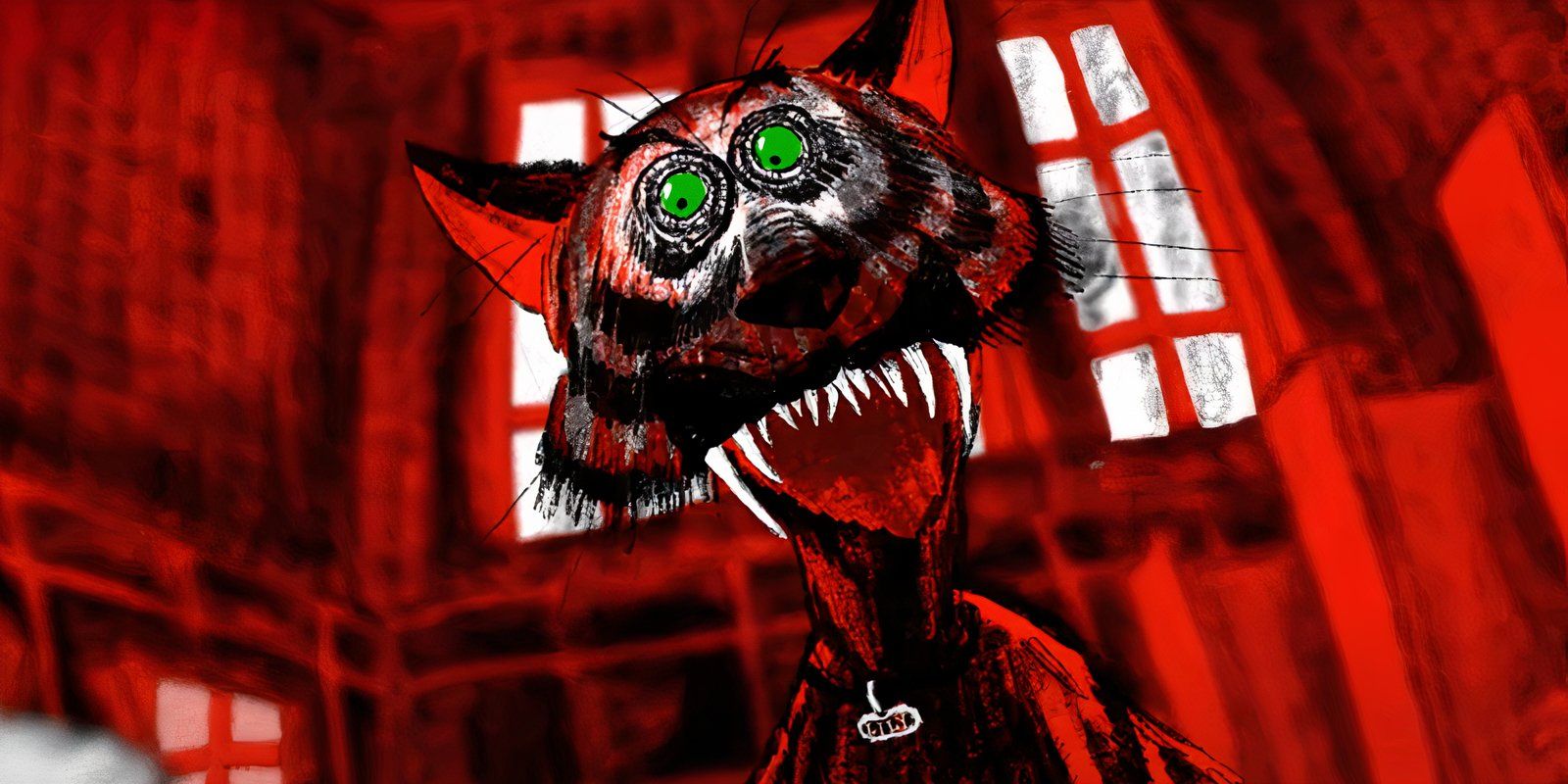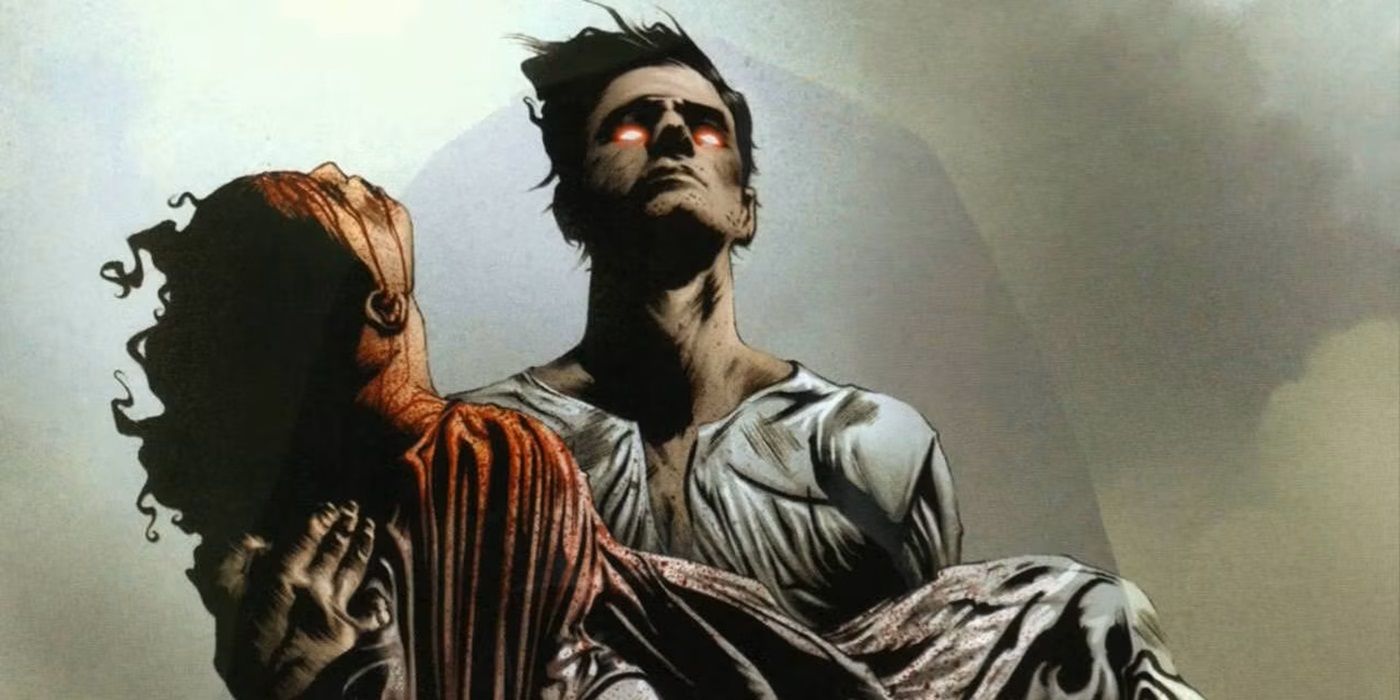Dan Da Dan is an anime adaptation of the popular manga DanDaDan, with fantastic animation, incredible voice acting, a banger of a theme song, and all things supernatural. As if all that weren't enough, the show is overflowing with angsty, awkward comedy moments and a truly unique portrayal of adolescent self-discovery. But for many viewers, friends' recommendations of Dan Da Dan came with one big disclaimer: don't stop watching after the first episode, it's worth it.
The first episode was admittedly jarring, with the show hitting the ground running at an absolute sprint with an alien abduction and attempted assault of a high school-aged main character, Momo Ayase. Paired with a main antagonist ghost named "Turbo Granny" whose catch phrase is "let me gobble that weenie," it might seem like a cesspool of crude immaturity or at times even worse, voyeurism. However, while not without flaws, Dan Da Dan is a rare example of a show that's given true narrative and thematic value to the horrors it portrays, and even to its particular brand of potty humor.
Dan Da Dan Is a Coming-of-Age Story
The Terrors of Adolescence and the Supernatural Aren’t So Far Apart
It is exactly the parallels it draws between genuinely traumatic horrors and pubescent slapstick comedy that enable the anime to capture that terrifying awkwardness of discovering your sexuality and identity for the first time. Being abducted by aliens or possessed by a ghost is put in parallel with immature things like a girl seeing your privates, and nothing quite tackles the weirdness of teenage puberty quite as well. It ticks a lot of genre boxes, with incredible action sequences, moments of horror, and overflowing comedy, but Dan Da Dan truly sets itself apart as a coming of age story.
The loss of innocence that is a staple of every coming-of-age journey is in this case rather on the nose, as a discovery that ghosts and aliens are in fact real. However, it's surprisingly given an extra layer of depth by the goals of those beings: from the aliens and Turbo Granny in the first episode, to the alien that descends on Momo's grandmother's home in the second, there is a consistent common target of the young protagonists' "banana" or "weenie". It's disturbing, hilariously childish in use of language, and more meaningful than you might think.

Related
Dan Da Dan Hit With The Kind Of Overseas Censorship Not Seen Since 4Kids' Infamous One Piece Dub
Fans have taken to social media criticizing the intense and unecessary censorship made to Dan Da Dan in certain regions.
That the antagonists are so consistently either coveting or hunting the genitalia of the protagonists highlights the ways teenage identity and esteem are wrapped up in puberty and sexuality. It also has the tone of that typical Millennial humor that makes silly immature jokes in the face of extreme existential dread. In combination, it makes an otherwise crude shtick a powerful narrative tool that captures that intangible feeling of being an awkward high-schooler in the throes of self-discovery, and delivers it with the utmost entertainment.
The Silliest Moments Highlight the True Fears of Momo and Oka-run
Episode #3 involved a chase sequence after Ken Takakura, who Momo calls Oka-run since he shares the same name as her celebrity crush, after he realized he wouldn't be able to use the bathroom without Momo looking at him to contain the evil spirit inside him. While it might seem like a simple thrown in joke, this was a key moment. Oka-run's extreme fear of being seen and humiliated is just as palpable as when he faces true enemies, and that fear is emblematic of the young pubescent experience of stages of overcoming the taboo and awkwardness of these subjects.
Beyond this, Oka-run's fear of being seen is also easily tied to his repeated requests to Momo to remain his friend, and expressions of fear that she may end up rejecting him. He's shy at Momo's initial request to see when he reveals that Turbo Granny did indeed mutilate him, treating the idea of dropping his pants as if it were equally bad regardless. His general awkwardness and insecurity translates to illogical embarrassment with Momo, and his overall fear of rejection. It again emphasizes the character's slow growth in identity and ties it to sexuality and self-acceptance.
Real-Life Horrors Are a Poignant Reminder of What It's Like to Grow Up a Woman
Momo and Oka-run's struggle against Turbo Granny reached a climax in Episode #4, and in the aftermath, Momo's grandmother revealed the source of the location spirit and Turbo Granny's strength. She informed them both that the location spirit was the product of the spirits of dozens of young girls who had been brought to the tunnel Turbo Granny was in, assaulted and mutilated, turning them into unwilling evil spirits. Turbo Granny was known for appearing around these sorts of locations of tragedy to console the spirits of the victims.
This added layer of real threat and a heavy dark thematic string, is also a very real and important representation of the darker side of puberty and sexuality, especially as a woman, and the discovery that you are a target. While more comedic moments show the ways embarrassment makes some fears irrationally seem as bad as aliens and ghosts, moments like the end of Episode #4 are sobering statements of reality. They put the struggles of adolescence in perspective as a jumble of fears real and irrational that have to be sifted through and come to terms with as one becomes an adult.
Dan Da Dan Still Has Its Flaws
There's Never a Good Reason to Force the Viewer to Look at a Minor in Their Underwear
While the utilization of these sorts of fears is a novel, and meaningful application of shock-value in the anime, there is also still room for improvement. It could be argued the scene of an attempted rape in Episode #1 made the viewer an unintentional voyeur, giving them the same view as the assaulting aliens, of Momo in underwear and cuffed to a chair with legs spread. This was not even the only time we would see her in such a state.
This scene could easily have been constructed differently, to focus on close-ups of her facial expressions and the cuffs at her wrists even, to demonstrate the situation without giving the audience a full-frontal view of her. This would have achieved the same effect, without the voyeurism and additional discomfort for the viewer or, more worryingly, potential lack thereof. Even her kicking the alien in the head, as a parallel to the scene in which she does so with her ex-boyfriend, was a moment of powerful transformation that could have been kept and just slightly adjusted to the same effect.
Furthermore, the story seems to in general lean into the hyper-sexualization of its women, as Momo's grandmother is designed as if she were a 20-year-old with white hair and a large, constantly exposed chest. It was a bit disappointing, especially for a series that prides itself in giving its female lead just as much screentime and importance as her male counterparts.
Overall Dan Da Dan Is a Unique, Boundary-Pushing Anime That's Worth the Watch
While its flaws are real, its strengths are heavy hitters with new and unique twists on classic shōnen tropes, and protagonists with depth and emotional range that draw the viewer into each continuing episode. Momo and Oka-run's relationship feels genuine and natural, un-rushed and full of awkward and wholesome moments in equal measure. Even setting aside Dan Da Dan's well-animated constant action, the incredible visuals of the character and environmental art styles, and the effective sound design, this anime is a genre-bending and groundbreaking good time.

Two high school students, embroiled in a wager to prove the existence of ghosts or aliens, encounter daunting paranormal threats, acquire superpowers, and possibly discover love. The series blends supernatural elements with personal dynamics as the protagonists navigate their newfound abilities and unexpected challenges.
Release Date September 13, 2024
Seasons 1





:quality(85):upscale()/2023/09/21/802/n/1922729/d9a11ce9650c8850437280.00070284_.jpg)

:quality(85):upscale()/2024/10/30/955/n/42301552/28e49c1e6722ab5b973b38.46745005_.jpg)

 English (US) ·
English (US) ·